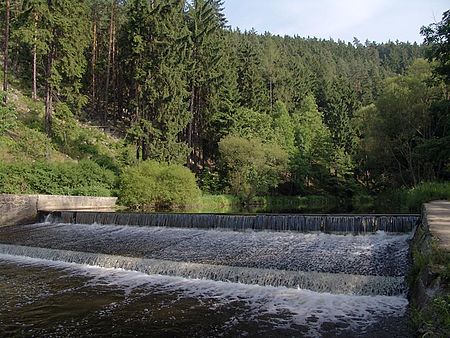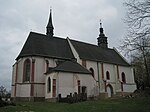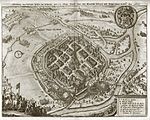Mže

The Mže (Czech pronunciation: [mʒɛ]; German: Mies) is a 105 km (65 mi) long river, mostly in the Czech Republic. Its source is situated in the Griesbach Forest (726 metres (2,382 ft) above sea level), Germany, near the village of Asch, in the municipality of Mähring, Tirschenreuth district. It forms the state boundary for a short distance of 3 kilometres (1.9 mi) and then finally enters Czech territory. It passes through the towns of Tachov and Stříbro. At the confluence with the Radbuza, it forms the Berounka in Pilsen. Its major left tributary is Hamerský potok and the right tributary is Úhlava. There are two water dams on the Mže, Lučina and Hracholusky, both in the Tachov district. The basin area of the Mže is 1,828.6 km2 (706.0 sq mi), of which 1,792 km2 (692 sq mi) is in the Czech Republic.
Excerpt from the Wikipedia article Mže (License: CC BY-SA 3.0, Authors, Images).Mže
Luční, Pilsen Plzeň
Geographical coordinates (GPS) Address Nearby Places Show on map
Geographical coordinates (GPS)
| Latitude | Longitude |
|---|---|
| N 49.753333333333 ° | E 13.39 ° |
Address
Luční
301 12 Pilsen, Plzeň
Southwest, Czechia
Open on Google Maps










